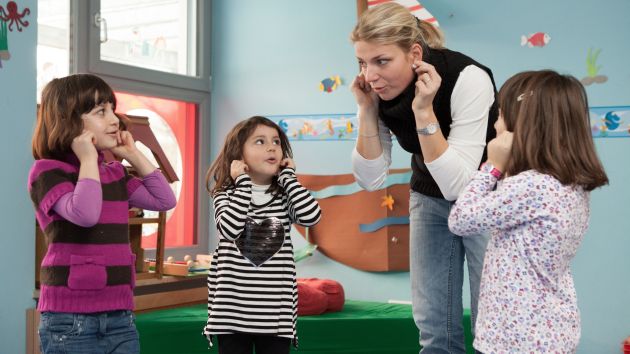Demand for early childhood language development is huge and has sparked all sorts of approaches, projects and opinions. But something has been missing: a scientific review of the effectiveness of language-learning programs. To fill this gap, Siemens Stiftung helped the ZNL TransferCenter for Neurosciences and Learning at the University of Ulm conduct a study that outlines supporting scientific research on a language development concept for multilingual children (“FoSmeK – Begleitforschung zu einem Sprachförderkonzept für mehrsprachige Kinder”). The results have now been compiled.
Researchers analyzed the effectiveness of the language learning method known by the German acronym KIKUS, or Children in Cultures and Languages, developed by the Center for Multilingualism in Early Childhood. KIKUS is an ancillary language development concept designed for children who do not speak German as their first language that begins at age 3. Siemens Stiftung has funded the use of KIKUS for more than seven years. In addition and as part of the study, the ZNL researchers identified general factors that play a key role in the successful learning of German by children raised in a multilingual environment.
A total of 171 preschoolers whose second language is German and who attend 19 different daycare centers in the Munich area took part in the study. The children were divided into two different groups: A KIKUS group who regularly used KIKUS at their kindergarten and a control group who did not take part in an ancillary language development program at their kindergarten. The children’s progress in German was measured by various language-development tests that were given at three separate times every seven months. Parents and preschool teachers were also questioned.
The evaluation of the KIKUS program showed that KIKUS teachers were very satisfied with the concept and its educational opportunities. Video analyses also showed that the children enjoyed the instruction and were very attentive during it. They also seemed to internalize the speech patterns they had practiced in the course. Their attentiveness rose continuously. Overall, the ability of all 171 children to speak German improved markedly during the period in which the study was conducted, nearly reaching the level of native German-speaking children. At this point, the children who attended the KIKUS course exhibited no differences to the control group. It was also determined that a wide range of individual course activities and learning experiences in day care centers are needed in addition to early supervision for children who grow up in a multilingual environment to successfully learn German . Furthermore, it was demonstrated that peer interaction with single-language German children is critically important to language development.
"Not least in consideration of the major challenges facing Germany at the moment, language promotion is and will remain a vital tool in the integration of many children whose second language is German," said Dr. Barbara Filtzinger, Head of Working Area Education at Siemens Stiftung. "We are very happy that we could identify factors that make up effective language promotion by supporting this study."
The results of the accompanying research are now available at www.znl-ulm.de



